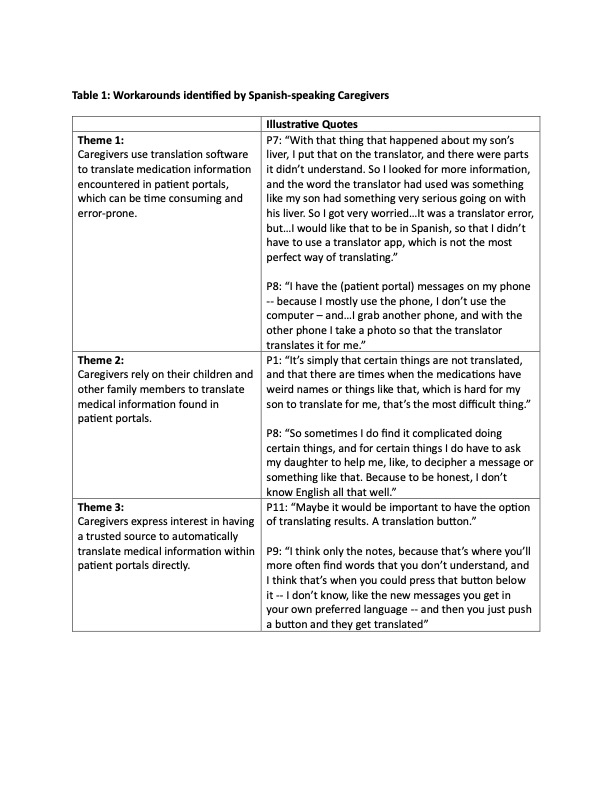Technology
Session: Technology 1
179 - Workarounds utilized by Spanish-speaking caregivers encountering translation barriers with patient portal use
Sunday, May 5, 2024
3:30 PM - 6:00 PM ET
Poster Number: 179
Publication Number: 179.1878
Publication Number: 179.1878

Katherine Hu, BS (she/her/hers)
medical student
Stanford University School of Medicine
Stanford, California, United States
Presenting Author(s)
Background: Patient portals are intended to engage caregivers with their child’s healthcare by allowing them to read clinical notes, access test results, make appointments, and message providers. While patient portals typically offer multiple language options, the extent to which medical information is translated remains limited. Understanding how caregivers who speak languages other than English address language barriers when using patient portals is critical to promoting equitable access and use.
Objective: To identify workarounds developed by Spanish-speaking caregivers when they encounter translation barriers while using their child’s patient portal.
Design/Methods: In this qualitative study, a bilingual researcher conducted semi-structured interviews with Spanish-speaking caregivers from May to October 2023. Caregivers were included if they had a child < 12 years old with at least one chronic condition and an active patient portal account. Interview questions were guided by our study objective, reviewed by the hospital's Latinx Family Advisory Council and piloted with Spanish-speaking caregivers. Interviews were recorded, transcribed and translated verbatim. Two researchers independently coded transcripts and met to reconcile codes and develop preliminary themes. Themes and coding conflicts were discussed and reconciled with three other researchers.
Results: We interviewed 20 Spanish-speaking caregivers. Three themes were identified: 1) Caregivers use translation software to translate medication information encountered in patient portals, which can be time consuming and error-prone; 2) Caregivers rely on their children and other family members to translate medical information found in patient portals; and 3) Caregivers express interest in having a trusted source to automatically translate medical information within patient portals directly. Themes and illustrative quotes are shown in Table 1.
Conclusion(s): Spanish-speaking caregivers develop workarounds, which are time consuming and may jeopardize patient safety, to overcome translation barriers when using patient portals. Future interventions should focus on designing user-centered solutions to improve translation capabilities within patient portals and facilitate equitable use by patients and families.

